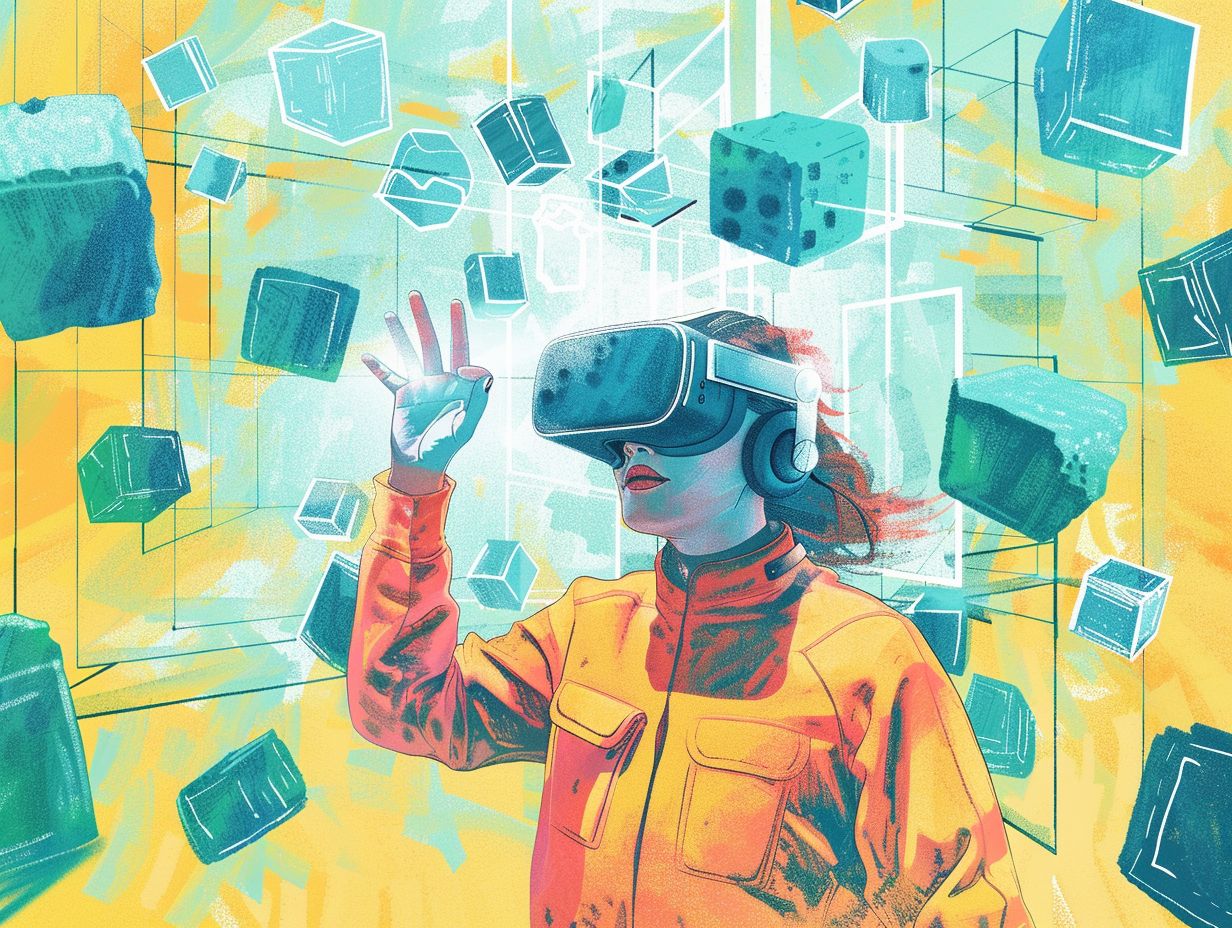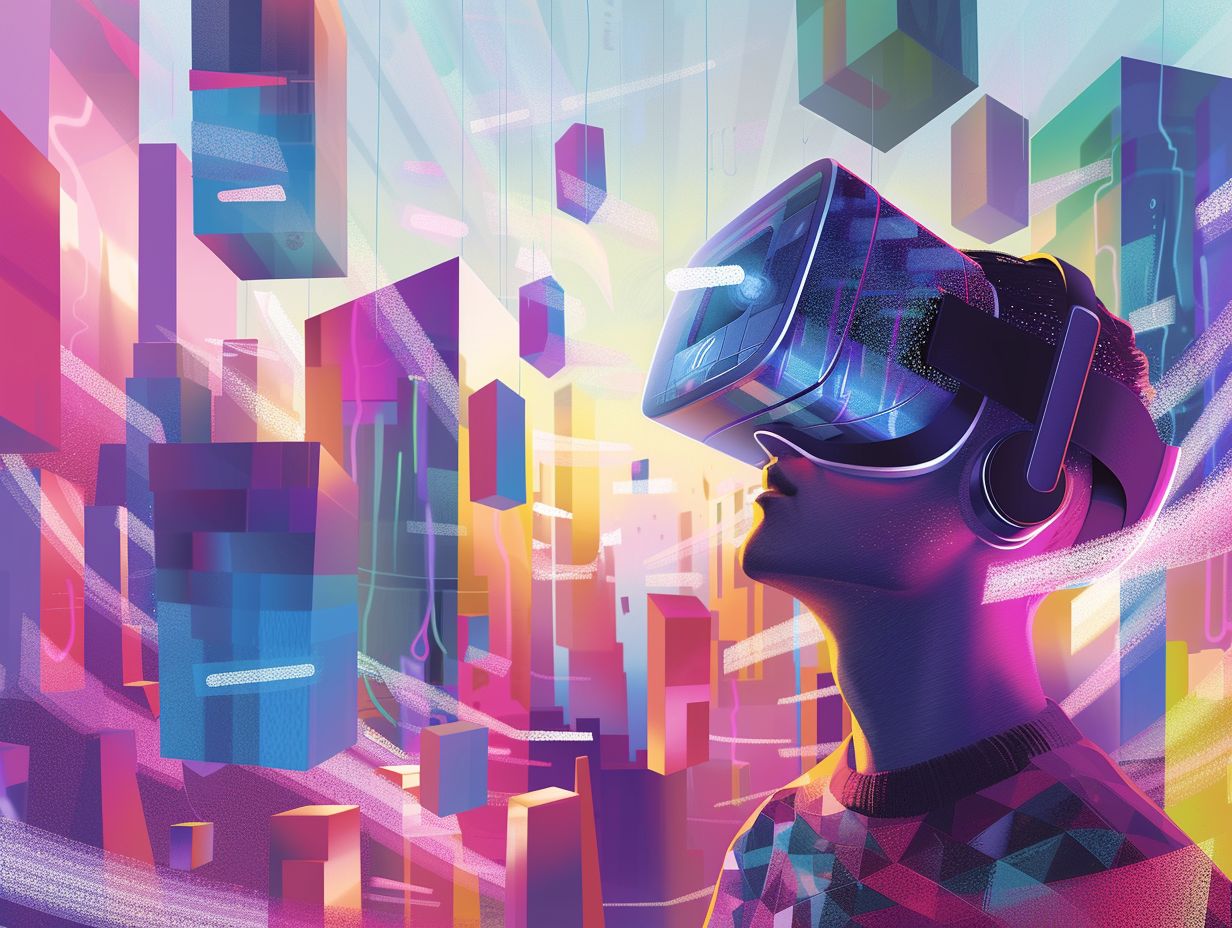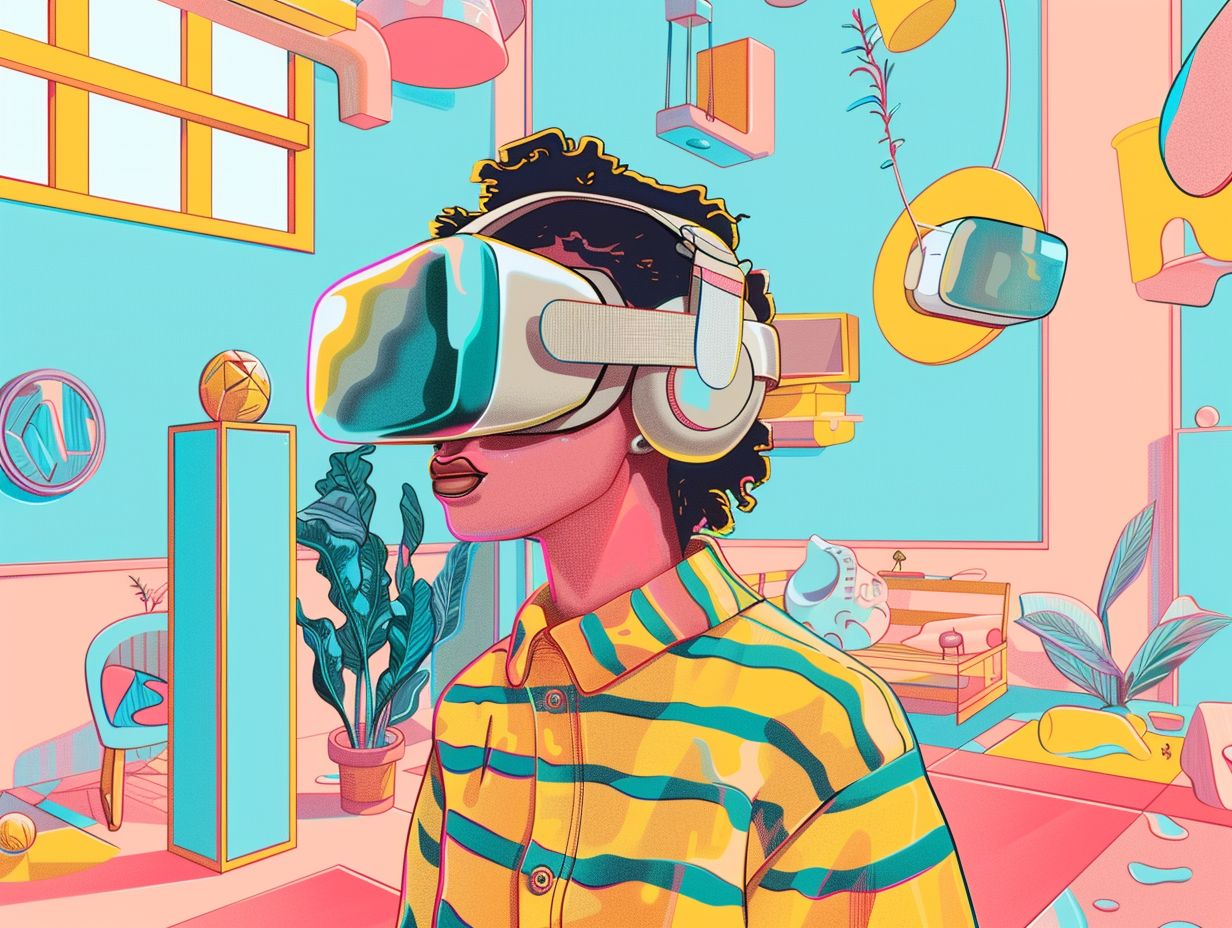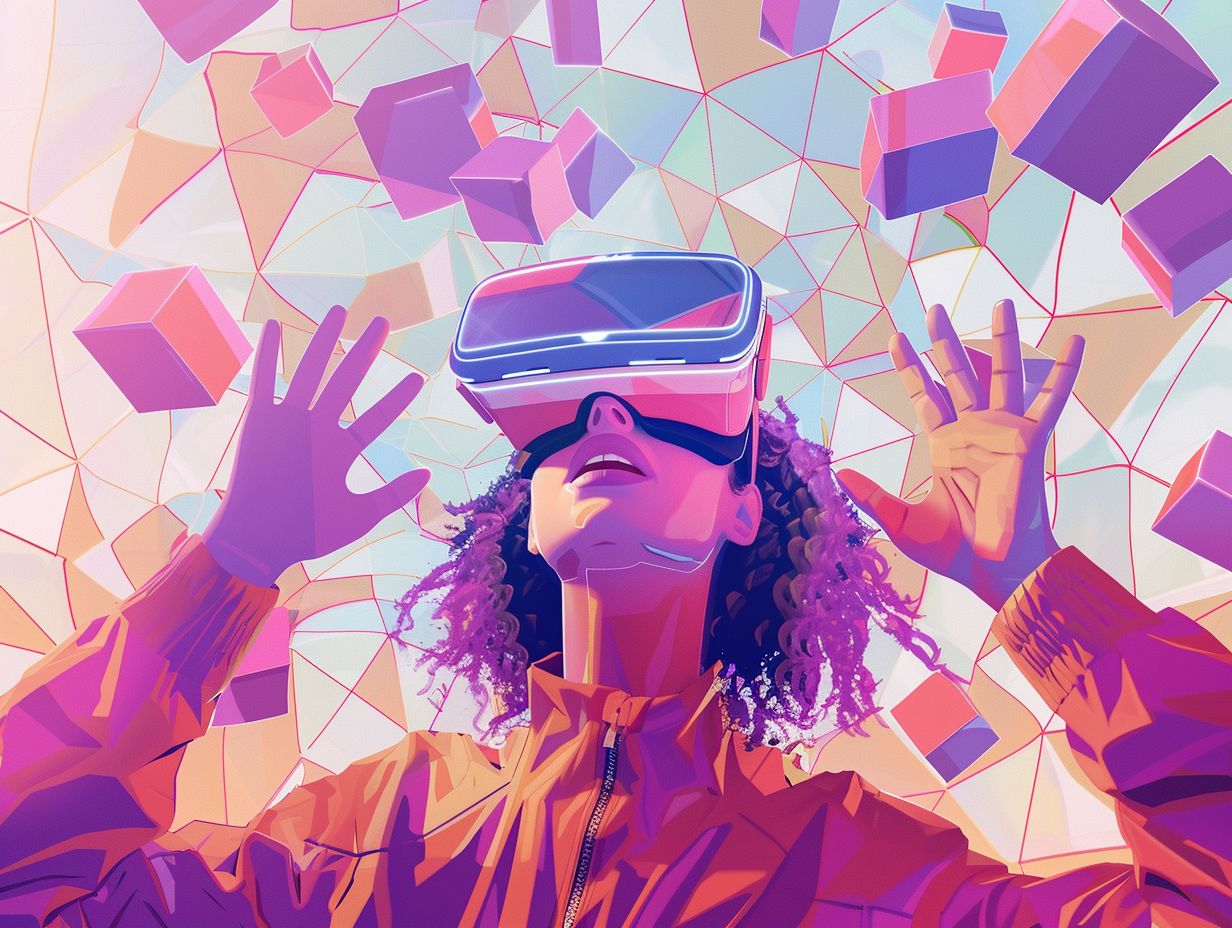Are you interested in learning more about the world of Augmented Reality (AR) and Virtual Reality (VR) in technical training? Uncover the advantages of integrating AR and VR into online technical training programs. From increased engagement and retention to cost-effectiveness, discover how these technologies can elevate the learning process. Examine practical instances of AR and VR being used in technical training and gain insights on how to implement these technologies efficiently. Dive into the future prospects of AR and VR in technical training and the potential developments on the horizon.
Key Takeaways:

- The rise of virtual reality in technical training offers enhanced engagement and retention, making it a valuable tool for learners and trainers alike.
- Utilizing AR and VR in technical training can result in cost and time savings, making it a practical and efficient option for organizations.
- Implementing AR and VR in technical training requires careful planning and consideration of technical and practical challenges, but the potential advancements and impacts make it a worthwhile investment for the future.
Defining AR and VR
Augmented Reality (AR) and Virtual Reality (VR) are advanced technologies that enhance the physical world with digital information and create immersive simulated environments, respectively. AR overlays digital content onto the real world through devices like smartphones or AR glasses, enriching the user’s perception of reality. On the other hand, VR completely immerses users in a computer-generated environment, typically experienced through headsets. While AR enhances the real world by adding digital elements, VR transports users to entirely virtual realms, offering unparalleled levels of immersion. Both technologies have revolutionized industries like gaming, education, and healthcare, but they cater to different use cases and provide unique experiences to users.
Benefits of Using AR and VR in Technical Training
Utilizing Augmented Reality (AR) and Virtual Reality (VR) in technical training provides a wide array of benefits. These include offering immersive learning experiences and enhancing skills acquisition through interactive simulations and real-world scenarios.
Improved Engagement and Retention
One significant advantage of using AR and VR in technical training is the improved engagement and retention rates among participants due to the interactive and immersive learning experiences they provide. This technology allows you to actively participate in simulated scenarios, creating a more hands-on and engaging learning environment. By offering immediate feedback mechanisms, AR and VR enable you to track your progress, identify areas for improvement, and adjust your approach in real-time. The immersive nature of these experiences also helps in enhancing information retention, as you tend to remember and understand concepts better when fully absorbed in a virtual environment. Such interactive learning fosters a deeper level of understanding and skill acquisition, making the training process more effective and enjoyable.
Cost and Time Savings
One of the key benefits of incorporating AR and VR technologies into technical training is the potential for significant cost and time savings. This is achieved through practical engagements and controlled immersive experiences that effectively replace traditional training methods. When utilizing AR and VR, trainees have the opportunity to engage in realistic simulations that closely resemble real-world scenarios. This enables hands-on learning within a safe and controlled environment. Such a hands-on approach not only enhances learning outcomes but also accelerates skill development by providing immediate feedback and efficiently tracking progress. The immersive nature of AR and VR experiences ensures that trainees are fully engaged and focused, resulting in quicker skill acquisition and retention. Ultimately, this leads to a reduction in training costs and time investments.
Examples of AR and VR in Technical Training
 Numerous industries have effectively integrated AR and VR technologies into technical training, demonstrating their wide-ranging applications in sectors like healthcare, military, and employee coaching.
Numerous industries have effectively integrated AR and VR technologies into technical training, demonstrating their wide-ranging applications in sectors like healthcare, military, and employee coaching.
Real-World Applications
AR and VR are widely used in technical training to provide immersive experiences through realistic scenarios, bringing benefits to industries like healthcare, military, and industrial sectors. These cutting-edge technologies transform the learning process by recreating intricate situations and hands-on activities in a secure and controlled setting. In the healthcare field, healthcare providers can practice surgical procedures and diagnostic techniques without posing any danger to patients. Likewise, the military employs AR and VR for combat training and mission simulations to improve strategic decision-making and situational awareness. Industrial companies utilize these tools for training on equipment maintenance and operational simulations, enhancing workflow efficiency and minimizing costly mistakes.
Implementing AR and VR in Technical Training
When integrating Augmented Reality (AR) and Virtual Reality (VR) into technical training, a structured approach is essential. This approach should include detailed instructional design customized to meet the educational objectives and specific requirements of participants.
Steps and Best Practices
To effectively implement AR and VR in technical training, you need to design practical engagements that align with educational goals and accommodate the diverse needs of participants to achieve optimal learning outcomes. To begin, it is crucial to clearly define the educational objectives that the AR and VR experiences are intended to address. These objectives should be learner-centered, with a focus on enhancing knowledge acquisition, skill development, and retention through interactive and immersive learning environments. Participants should actively engage in the training process, encouraging them to explore, experiment, and apply their newly acquired skills in real-world scenarios. The incorporation of feedback mechanisms and performance assessments can further improve the effectiveness of the training program, ensuring that the learning outcomes are measurable and impactful.
Overcoming Challenges in Using AR and VR
Despite the numerous benefits, the adoption of Augmented Reality (AR) and Virtual Reality (VR) in technical training comes with its set of challenges, including addressing technical issues and health concerns associated with prolonged immersive experiences.
Technical and Practical Considerations
 When considering the integration of AR and VR into technical training, you must address various factors to ensure a successful implementation. These factors include cost savings, optimizing employee training processes, and mitigating technical challenges. In terms of cost savings, utilizing VR and AR technologies can lead to significant reductions in expenses typically associated with traditional training methods, such as travel costs and the requirement for physical training materials. The benefits to employee training are substantial, as these immersive technologies provide a hands-on learning experience that enhances retention and engagement. To effectively address potential technical issues, organizations should invest in robust technical support systems and conduct thorough testing. This testing will help identify and resolve any glitches before the full implementation of AR and VR training programs.
When considering the integration of AR and VR into technical training, you must address various factors to ensure a successful implementation. These factors include cost savings, optimizing employee training processes, and mitigating technical challenges. In terms of cost savings, utilizing VR and AR technologies can lead to significant reductions in expenses typically associated with traditional training methods, such as travel costs and the requirement for physical training materials. The benefits to employee training are substantial, as these immersive technologies provide a hands-on learning experience that enhances retention and engagement. To effectively address potential technical issues, organizations should invest in robust technical support systems and conduct thorough testing. This testing will help identify and resolve any glitches before the full implementation of AR and VR training programs.
Future of AR and VR in Technical Training
The potential for advancements that can revolutionize learning experiences across industries lies in the future of Augmented Reality (AR) and Virtual Reality (VR) in technical training. This could pave the way for transformative impacts on educational methodologies and skill development.
Potential Advancements and Impacts
The evolving landscape of eLearning is being transformed by AR and VR technologies, offering new possibilities for remote and flexible training methods. These technologies provide real-time guidance to learners, enhancing accessibility and creating interactive learning environments. AR and VR technologies introduce a dynamic approach to learning, allowing learners to immerse themselves in scenarios that replicate real-world experiences. This immersive learning experience makes the educational process more engaging and effective. By enabling interaction with 3D models and simulations, trainees can better understand complex concepts. AR and VR also support personalization in training programs, adjusting to individual learning styles and pacing. Furthermore, the incorporation of gamification and interactive challenges enhances user engagement and knowledge retention, revolutionizing the delivery and absorption of technical training in the digital era.
Frequently Asked Questions
What is AR and VR and how can they enhance online technical training?
AR (augmented reality) and VR (virtual reality) are interactive technologies that simulate real-world environments or add digital information to real-world settings. They can enhance online technical training by providing an immersive and interactive learning experience that goes beyond traditional methods, making it easier for learners to understand complex topics and retain information.
How can AR and VR be used in technical training courses?
 AR and VR can be used in technical training courses to create virtual simulations, interactive tutorials, and 3D visualizations that allow learners to practice and apply their skills in a virtual environment. They can also be used for remote training and collaboration, providing a more engaging and effective learning experience.
AR and VR can be used in technical training courses to create virtual simulations, interactive tutorials, and 3D visualizations that allow learners to practice and apply their skills in a virtual environment. They can also be used for remote training and collaboration, providing a more engaging and effective learning experience.
What are the benefits of using AR and VR in online technical training?
Some of the benefits of using AR and VR in online technical training include increased learner engagement, improved understanding and retention of complex concepts, hands-on practice in a safe virtual environment, and the ability to provide personalized and interactive learning experiences.
Are there any limitations to using AR and VR in online technical training?
While AR and VR can greatly enhance online technical training, there are some limitations to consider. These include the initial cost of implementing the technology, the need for specialized equipment and training, and the potential for technical issues or glitches that could disrupt the learning experience.
What industries can benefit from using AR and VR in online technical training?
AR and VR can benefit a wide range of industries that require technical training, such as healthcare, manufacturing, engineering, construction, and automotive. These technologies can be used for training on specific equipment, procedures, or processes, as well as more general technical skills.
How can I incorporate AR and VR into my online technical training courses?
To incorporate AR and VR into your online technical training courses, you can partner with a specialized training provider or invest in AR/VR development tools and software. You can also consider outsourcing the development of virtual simulations or tutorials to a professional team. It’s important to evaluate your training goals and budget to determine the best approach for your specific needs.
